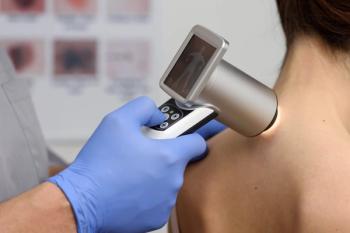
Patient Safety Gains Eroding in COVID-19 Pandemic
An analysis cites increases in bloodstream and urinary tract infections. Hospitals and skilled nursing facilities are seeing more problems.
Hospitals made impressive strides in improving patient safety for years, but the COVID-19 pandemic appears to have reversed those gains.
Several indicators point to that troubling assessment, according to an
“We have observed substantial deterioration on multiple patient-safety metrics since the beginning of the pandemic, despite decades of attention to complications of care,” the authors stated.
The analysis points to central-line–associated bloodstream infections in U.S. hospitals, which had dropped by 31% in the 5 years before the pandemic emerged. In the second quarter of 2020, central line infections rose by 28%, compared to the same quarter in 2019.
In addition, hospitals witnessed increases in catheter-associated urinary tract infections and ventilator-associated events.
“The public health emergency has put enormous stress on the health care system and disrupted many normal activities in hospitals and other facilities,” the authors state. “Unfortunately, these stressors have caused safety problems for both patients and staff.”
Skilled nursing facilities also saw declines in patient safety in the second quarter of 2020, the authors noted. Rates of falls causing major injury at skilled nursing facilities rose by 17.4%, while pressure ulcers increased by 41.8%.
Why it’s happening
Key leaders from the Centers for Medicare & Medicaid Services and the Centers for Disease Control and Prevention produced the analysis.
They noted a host of reasons for the loss of ground on patient safety: hospitals have been flooded with COVID-19 patients, healthcare workers have been pushed beyond the
With those challenges, routine safety practices, such as safety audits and error reporting, are falling by the wayside, the authors stated. Well-publicized shortages of personal protective equipment also exposed workers to greater risks of injury or infection.
The federal government has also been prodding the healthcare industry to do more to protect its workforce. Citing
What can be done
While noting the pandemic’s challenges, the authors said the rapid declines in patient safety suggest the healthcare system doesn’t have “a sufficiently resilient safety culture and infrastructure.”
The CMS and CDC leaders called on healthcare leaders to review safety practices at their institutions, along with an eye on improving equity in outcomes among all groups.
Healthcare organizations would do well to take lessons from other industries, which have embedded safety training and practices throughout their organizations. Healthcare leaders must develop clear metrics to measure safety and demonstrate a greater commitment to safety that extends from executive offices to front-line workers, they said. Organizations also need to ensure proper supplies of protective equipment.
In addition, the healthcare industry must focus on safety measures beyond the hospital, including outpatient care and diagnostic errors, they said.
The authors also suggested bolder national goals of reducing harm throughout the healthcare system and promoting transparency. They said CMS and CDC are expanding the collection and use of data in some safety measures, including maternal health and mental health. Electronic medical records contain a host of data that could be used as safety metrics in the CMS Quality Payment Program, they said.
It’s time to address the declines in patient safety by developing new practices now, the authors said.
“We cannot afford to wait until the pandemic ends,” they wrote.
Lee A. Fleisher, chief medical officer and director of The Center for Clinical Standards and Quality at CMS, was the lead author of the piece. Michelle Schreiber, the center’s deputy director, also contributed to the analysis, along with the CDC’s Denise Cardo and Arjun Srinivasan.
Newsletter
Get the latest industry news, event updates, and more from Managed healthcare Executive.






















































